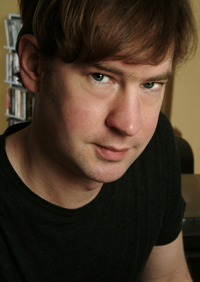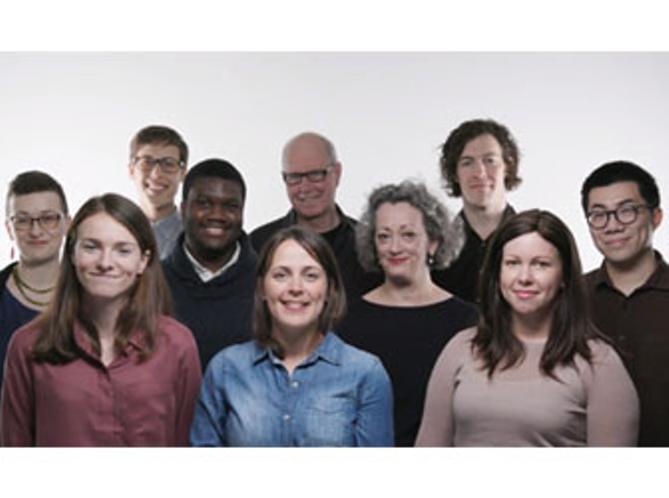
- Bottomfeeder: How to Eat Ethically in a World of Vanishing Seafood
- Bloomsbury (2008)
When Taras Grescoe declares he will try anything on his voyage around the world in search of ethical seafood, he means it. He eats poisonous pufferfish, morally questionable shark fin soup, and potentially dangerous oysters during months without r's. He even samples fishmeal (yuck). After 18 months of eating his way up and down the marine food chain, Grescoe exits a bottom-feeder -- committed to consuming fish lower on the marine food web, with the exception of farmed shrimp (too toxic) and wild abalone (too rare).
His tome on the subject, Bottomfeeder: How to Eat Ethically in a World of Vanishing Seafood (Bloomsbury: 2008), will certainly whet any seafood lover's appetite. Grescoe relishes in coconut-soaked prawn curry, bouillabaisse made with saffron and Niçois wine, and Brittany sardines canned in olive oil. But the aim of Bottomfeeder is not only to tingle taste buds but also to stir the conscience.
Grescoe's preference for seafood is driven by his ethics and health concerns in addition to his stomach. He keeps oysters and anchovies as future meals but crosses tuna off his list because labelling laws are lax and, without knowing the species of tuna or where and how it was caught, it is impossible to determine whether tuna is ethically edible. He also shuns farmed salmon, which propagate the sea lice that are partially to blame for the decimation British Columbia's wild salmon stocks. In the 1960s, 144 streams supported Pacific salmon in the Broughton Archipelago. Today, wild salmon make their babies in only six.
The global fish stick
Global warming further complicates the task of an ethical eater. Fish sticks could be made of well-managed Alaska pollock, but the fish might have travelled 4,300 miles just before it reaches the processing plant. Salmon farmed in Chile, filleted in China, processed and packaged in Canada, and eaten by a customer in San Diego could travel as far as 22,300 miles!
Bottomfeeder investigates some of the biggest problems with fishing: corruption, overfishing of top predators, bottom trawling, illegal fishing, and the wasteful habits of bycatch and the fishmeal industry. But Grescoe also recognizes it is not only feeding the human appetite that has marine life in a pickle.
Fish in the Mediterranean, for instance, have survived 100,000 fishermen in 21 different countries. Instead, the fate of fish there is most threatened by invasive species, sewage effluent, and climate change. Globally, ships carry as many as 7,000 different invasive species in the 11 billion tons of ballast water, which helps explain the 400 introduced species in the Mediterranean. When the municipal water treatment overflows in the French port of Marseilles, the streets become cacaducs and raw sewage drains straight to the sea.
'The rise of slime'
Polluted conditions combined with warmer water favor sea life such as 'snot volcanoes'--gelatinous columns of microbes that rise from the ocean floor. The sea Grescoe describes reflects what Jeremy Jackson, a marine ecologist at Scripps Institution for Oceanography, has warned will be the result of overfishing, pollution, and warming: "the rise of slime."
Inevitable inhabitants of our slimy future are jellyfish, which thrive in warm, oxygen-poor waters. According to Grescoe, this future can be delicious if properly prepared. And, if history serves as an indication, what better way to eradicate a species than to create demand for it? But, with 100 grams of jellyfish containing just four calories, Grescoe's suggestion to eat the invaders will not solve the food needs of many poor coastal communities dependent on protein-rich seafood for survival.
The complexity and dismal state of seafood systems can be overwhelming and Grescoe admits to wondering whether he should stop eating fish altogether. But any "culinary scruples" Grescoe began to foster were abandoned in Japan, where even babies eat seafood. There he munches on the heavily overfished bluefin tuna, whale meat, and several animals that are still alive and writhing.
Gulp!
Grescoe simply enjoys seafood too much to leave it alone. Every single ecologist and fisheries scientist he meets also continues to eat seafood, just "very, very carefully." Grescoe believes that he can eat ethically (though he outlines factors that subvert this cause, such as the mislabelling of species). In an attempt to balance virtue with pleasure, he resolves to bottom-feed, which he now does at least four times each week.
The conclusion to eat species toward the bottom of the marine food web is a good one, particularly because choosing to do so is preferable to being forced. What is less realistic is Grescoe's recommendation that seafood shoppers aspire to be as hyper-informed as he has become. He roams the grocery aisles with Dalhousie University professor Boris Worm as they co-demonstrate careful consumption. But Grescoe's awareness is the result of an 18-month seafood assignment while Worm's fish Rolodex is a byproduct of being a marine biologist.
Still, digesting the content in Bottomfeeder is a step in the right ethical direction for any seafood consumer -- but the book should come with a disclaimer that, without government action, even the most informed consumers cannot save our fish.




